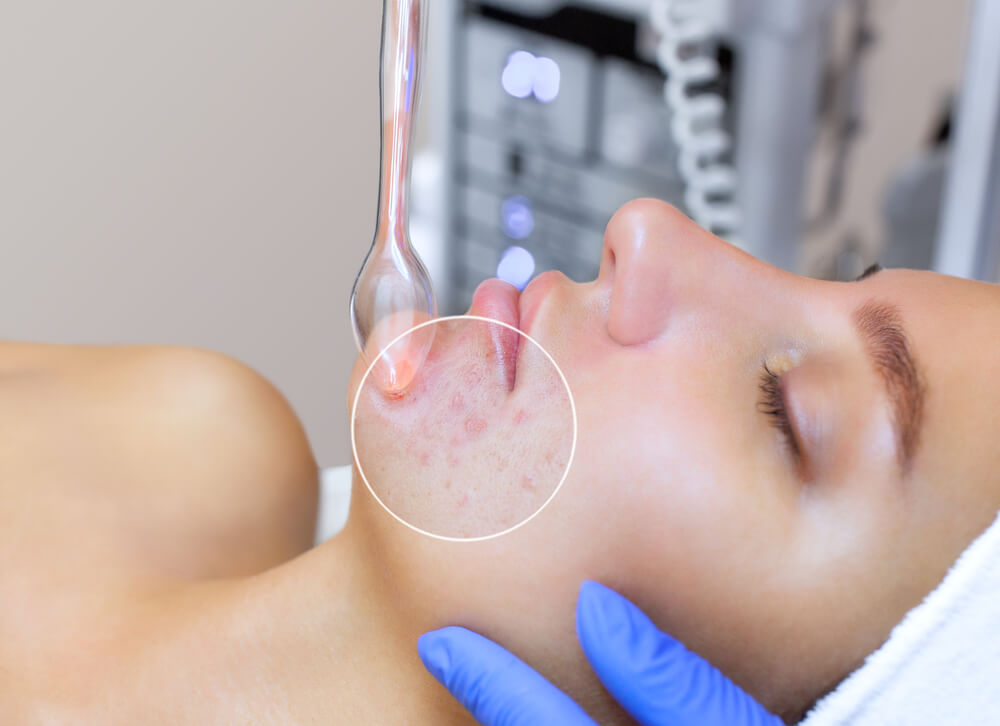Let’s jump straight in. To treat skin pigmentation problems safely and effectively you need to know what type of skin pigmentation you have. Once this has been established, then you can create a treatment plan for your skin.
Wait… there’s more than one type of skin pigmentation? Oh yes.
Today we’re going to focus on HYPERpigmentation which is an excess of pigmentation opposed to HYPOpigmentation which is when your skin loses pigment. Hyperpigmentation is an umbrella term for any darkening of the skin. Hyperpigmentation can be caused by sun exposure, hormones, or trauma to the skin. Essentially, it is your skin producing excess melanin in certain spots, leading to dark patches.
Sun damage and post-inflammatory hyperpigmentation
Hyperpigmentation resulting from sun damage (also known as photo-ageing) or that resulting from trauma such as a wound or acne (which is technically known as post-inflammatory hyperpigmentation) have no set pattern; they will either be directly in the trauma zone… so precisely where each acne spot was or where the cut or graze was is your pigmentation is post-inflammatory. If your hyperpigmentation is the result of sun damage this can appear commonly as freckles, individual dark spots, or a general unevenness to the skin tone. These types of skin pigmentation can be successfully treated with many of the same skin pigmentation treatments.
The skin pigmentation treatments often recommended in our skin clinic include Fraxel Dual laser, Clear and Brilliant laser, chemical peels, and prescription products.
Melasma
Now, melasma is a very specific type of hyperpigmentation. It’s unique. It usually appears as larger, symmetrical patches, often on the face—like the cheeks, forehead, or upper lip. The key difference? Melasma is often triggered by hormonal changes, like pregnancy, birth control or menopause; that’s why this form of pigmentation is sometimes called the “mask of pregnancy.”
Understanding the difference is crucial because melasma often requires a more cautious approach in comparison to other forms of skin pigmentation, frequently focusing on sun protection in combination with prescription treatments. We do have skin lasers here at our Hertfordshire skin clinic that are FDA approved to treat melasma but, in our vast experience, this treatment will be the exception to the rule and approached cautiously in combination with the melasma treatments previously mentioned if offered.
As you can see, melasma is a type of hyperpigmentation but it has its own distinct causes and treatment strategies. If you’re dealing with dark spots, knowing the difference can help you choose the right approach to get your skin looking its best.
What causes your skin pigmentation?
If you’re unsure what type of hyperpigmentation you have, you’re not alone; very often we have enquiries where the client is usually not sure if they have sun damage pigmentation or melasma. If this is the case for you too, it may be useful to think back to when you first noticed your hyperpigmentation:
- Was it around pregnancy?
- Did it appear around a change of hormonal contraception?
- Did you start noticing the pigmentation around perimenopause which, as a very general guideline is around 45 but is often younger for black and asian women (around age 38 according to the 2022 SWAN study), or after the menopause?
If you’re none the wiser, don’t worry, a professional can help you find out the answer during a consultation. At our Hertfordshire-based skin clinic, we will never treat you without consulting with you first to determine the type of skin pigmentation you have. This consultation will include a skin analysis using a skin scanner called the Visia.
The Visia is an important tool allowing us to see beyond what can be seen with the naked eye. When it comes to hyperpigmentation, it’s important to see if there’s pigmentation lurking beneath the surface that’s not yet visible; it may reveal a typical melasma pattern of hyperpigmentation to us that can’t yet be seen on the surface; and it will allow us to see how deep or superficial you pigmentation is. All these factors will help you and your practitioner make a treatment plan unique to you and your skin’s needs no matter what type of skin pigmentation you have.
#skin #pigmentation #treatment #S2L

























